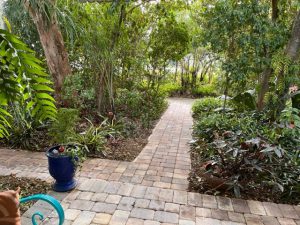Nature’s Best Hope, A New Approach to Conservation That Starts in Your Yard
As the year draws to a close, and we start thinking about the holidays and gift giving, consider this book, by Douglas W. Tallamy. If you are a nature lover, environmentalist, scientist, or simply love to garden, then this book is a must read. It’s not only a beautiful book (It has dozens of color pictures!), but instructive on an intuitive and practical level for all, and a cautionary tale. I loved this book so much that I want to tell you about it.
Seeing is believing
I had the pleasure of hearing him speak at FAU a couple of years ago and was impressed by his research and beautiful photography that he shares as he speaks. Douglas Tallamy is a professor of entomology and wildlife ecology at the University of Delaware. A well-known speaker and expert, his research includes food webs and biodiversity, and how native and non-native plants perform in the ecosystem. This book is the culmination of his findings about what is happening in the environment especially regarding insects and birds. In short, they are disappearing, and he explains why.
He arrived at a concept he calls “Homegrown National Park”
Two key assertions that he makes are that:
- “Conservation that is confined to parks will not preserve species in the long run, because these areas are too small and too separated from one another.”
- “Restoring habitat where we live and work, and to a lesser extent, where we farm and graze, will go a long way toward building biological corridors that connect preserved habitat fragments with one another.”
Some noteworthy quotes from the book
Chapter 8: Restoring Insects, the Little Things That Run the World
“If all mankind were to disappear, the world would regenerate back to the rich state of equilibrium that existed ten thousand years ago. If insects were to vanish, the environment would collapse into chaos.” – E. O. Wilson
Here at UF/IFAS we spend a lot of time trying to control and eradicate insects. While this may help the landscape short term, long term, it is contributing to a dearth of much needed insect populations that the birds rely on for food. (Not to mention humans, for without the insects, we all starve.)
One fact that I didn’t know or appreciate is that almost every species of bird must have caterpillars to feed their young. Caterpillars are the mainstay of the food parent birds feed their young. Not berries, not seeds, but caterpillars. That said, is it any wonder that the songbird population is plummeting?
Weeds are our Friends
“The bad rap that has been bestowed upon many native plants is more than an undeserved shame; it’s become an ecological disaster. These so-called weedy native plants support much of the animal diversity in North American and our war against them in residential and commercial landscapes, along roadsides and on the edges of croplands has been a primary cause of the decline of butterflies such as the monarch, thousands of species of native bees and countless other insects that no one is monitoring.”
The solutions he offers truly are our best hope.
Dr. Tallamy combines historical lessons, intricate research and solid answers to the dilemma we all face as we watch our environment deteriorate. This is NOT your average gardening book, but a thorough treatise and well-crafted solution. Meticulously referenced, and entirely readable, this is a fascinating book that would make the perfect gift.
It could also change the world for the better, one yard at a time….

Welcome to my front yard, now a mini forest.
 2
2
